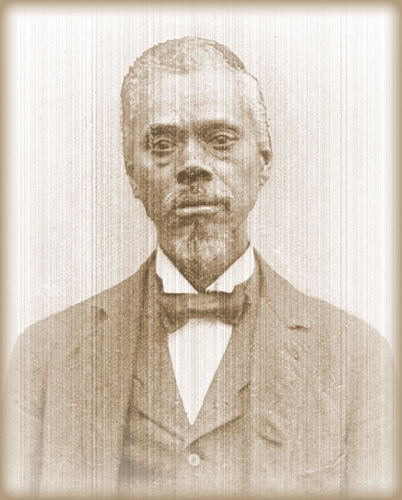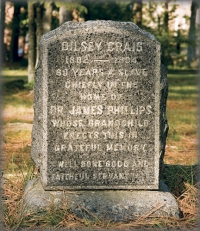Tim McMillan was sitting in a dark room with his Intro to Black Studies students, watching the PBS series Africans in America for about the millionth time. When Thomas Jefferson died in great debt, several of his slaves were sold to the University of Virginia, the narrator said. McMillan was struck. It was the first time he really heard that sentence.
“I’d never thought about universities as corporate entities, owning slaves,” he says. If UVa owned slaves, did UNC? McMillan wanted to find out. So he consulted every source he could find: the UNC archives, the censuses of 1860 and 1870, popular histories of UNC and Chapel Hill, newspaper articles — even the Carolina graveyard. He never found records that the university owned slaves outright. But he did find an awful lot of slaves passing through university hands, working for the university, and being called “servants.”
Here’s how it worked. An employee of the university — for example, the steward — owned a certain number of slaves. They would cook and clean for him and for the students. When the steward died or left the school, his replacement would own exactly the same number of slaves. Other times, when a slave-owner at UNC died without a will, the school sold the slaves. Slaves owned by professors (and by students, who brought them from home) also did university work, which could include almost anything — hauling water, guiding hunting expeditions, or driving carriages.
Wilson Swain Caldwell
It’s difficult to tell the stories of black people in UNC’s past, McMillan says, when the records that could lead us to them are sketchy, inaccurate, or missing altogether. “You can only find out slaves’ names if they’re mentioned in other peripheral documents,” he says. “A couple black people we know well, because they were owned by presidents of the university.” So that’s where he started.
Joseph Caldwell was UNC’s first president. His monument stands in McCorkle Place near Silent Sam; he’s mentioned in every campus tour. But Wilson Swain Caldwell — a central figure in McMillan’s upcoming book on racial identity and representation at UNC — served the university, both as slave and paid employee, for most of his life. And his history has been largely forgotten, if it was ever told.
Joseph Caldwell owned Wilson’s father. And David Swain, UNC’s second president, owned Wilson’s mother. But at birth Wilson Swain had neither of his parents’ names — he had his owner’s. Only after 1865, when Wilson was a free man, did he take his father’s last name. Wilson Swain Caldwell worked for the university as a gardener, a waiter, and an assistant in the chemistry lab, among other jobs. When the Civil War ended he got paid to do the same jobs he had been doing as a slave. His case isn’t unique, McMillan says, but we know about him because of his relationship with David Swain.
Wilson Caldwell received some education in the Swain household, and also taught himself. When the university closed during Reconstruction, he opened a “colored” school and taught there, and later he became one of the first black people elected to the Board of Aldermen. He owned twelve acres of land in what is now Carrboro, some of which is still owned by Caldwells who are his descendants.
“Everybody knows Hinton James. Everybody knows Dean Smith,” McMillan says. But Wilson Caldwell? “There’s a monument to him, but no one knows about him.”
Wilson Caldwell’s memorial stands on his grave in the black part of the old Chapel Hill cemetery — still divided from the white part by a low stone wall. It’s a pillar, and looks like a smaller version of Joseph Caldwell’s memorial in McCorkle Place.
That’s no coincidence — the marker now over Wilson’s grave was originally built for Joseph, but later alumni decided Joseph required a fancier one. So the class of 1891 moved it to the graveyard, and built the one for Joseph near Franklin Street.
Black women and families
While it’s hard to find records about black men in UNC’s history, it’s even harder to find information about black women. “They were the invisible of the invisible,” McMillan says.
To fill in the blanks, McMillan reads between the lines. He’s been checking the 1870 census, which lists occupations, against the 1860 census. “If somebody is black and a servant in a house, you can usually match them up with somebody who’s a slave in that same house ten years before. You have to piece together what you can.”
Dilsey Craig, one of the few black women about whom McMillan has been able to find information, was a slave in Cornelia Phillips Spencer’s home. Craig is buried in the Chapel Hill cemetery, and her stone is the only place in the cemetery where you’ll find the word “slave.”
“The university, and southerners in general, liked to call slaves ‘servants,’ because it sounded better,” McMillan says. “But her memorial says, ‘60 years a slave — principally in the home of James Phillips.’ And I think that’s great. I think that’s the best memorial there could be. It says, ‘Okay. We owned slaves.’”
Fiction as fact
Because historical documents rely on biased narrators, McMillan constantly consults multiple sources. He read a story about Wilson Caldwell in a Chapel Hill newspaper that contradicted information he’d studied in the North Carolina Collection. When he spread his net to fictional sources, he found that Caroline Hentz, wife of a UNC philosophy professor, wrote novels in which prominent black people in Chapel Hill were characters — Caldwell, Rosa Burgess, and George Moses Horton among them. “Lots of what showed up in later writing as fact were things that were in her novels,” McMillan says.
Rosa Burgess, for instance, is named “Venus” in one of Hentz’s novels. In later nonfiction writings by other authors, she’s called Venus, not Rosa Burgess. And McMillan’s students regularly hand in papers for his class — based on “histories” they’ve read — saying that George Moses Horton was freed for being such an extraordinary person.
But that only happened in Hentz’s novel. Horton had tried to buy his freedom numerous times, but was kept enslaved. “The novel was one of these namby-pamby retellings where of course, because he was a ‘good’ black man, he got his reward. Well, he didn’t! And after the war he got out of Chapel Hill as fast as he could. It’s interesting that the iconography of him is exactly opposite of what he was,” McMillan says.
Using what you know
While McMillan’s upcoming book covers nineteenth-century history, his cultural focus is on how we remember that century today. “What physical reminders of the past dominate the landscape? What interpretations do we put on these objects?” he asks. The book will look at UNC’s relationship with slavery and explore the differences between memory and myth — what McMillan calls “the complex cycle of forgetting and remembering.” But he is adamant about not calling it a history.
“I’m never going to be able to say, ‘This is what most black people were doing in Chapel Hill.’ But I can say, ‘This is what Wilson Swain Caldwell was doing. He’s the person we know the most about. This is what we can say about George Moses Horton.’”
And what if we discover ugly things about the people and places we’ve revered? Should we only honor people who never did anything wrong? No, McMillan says. “I don’t think forgetting about it makes it all okay. I’m more of the school of thought that we should dig our history up and stare at it.” When the project’s done, McMillan hopes it will have a real-world effect. He wants people to think of UNC as a physical place to learn from, not just learn in.



